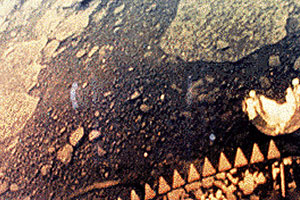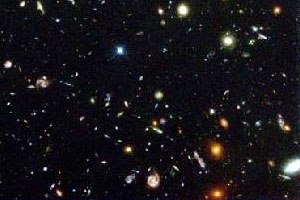The Forest
 Venus Landing. Credit:
Venus Landing. Credit:
Soviet Planetary Exploration ProgramIt's time to get back to some of the reader’s questions. Over the last couple of months I've focused on the easy ones like "how big is the universe?". Now, people are asking the tough ones, like that from Mike:
"There’s been a recent debate in our local papers regarding Venus' high planetary temperature being related to the dearth of carbon dioxide on the planet. Apparently Venus is much, much hotter than Mercury, even though Venus is twice as far from the sun. Could you explain a bit about our system’s planets and how they differ compositionally? What is it about the Earth's composition of elements that makes it just right for 99% of the life on the planet? I say 99% because it seems 1% of the life is strange enough to exist in all sorts of harsh conditions."
When it comes to the landscape of our own neighborhood, it gets a little more complicated for me. I have a tendency to look right past the solar system in my research of the distant Universe. I'm sure there's an explanation for this in the cliché of missing the forest for the trees. I just do it in reverse.
The Trees

 Hubble Deep Field. Credit:
Hubble Deep Field. Credit: